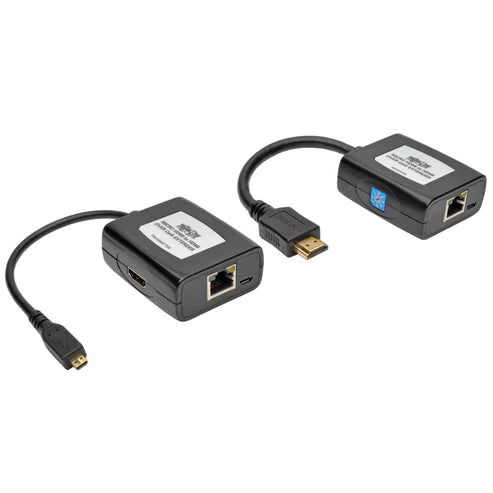How To Pick a Video Extender
Video extenders are useful devices that allow a video to be transmitted over greater distances than usual. They work by increasing the signal, whether wirelessly or simply by extending the cable, that way it can reach its destination.
These are great for events where videos are being displayed in many different locations that are far from the original source.
There are several different types of video extenders that you can use including wired and wireless extenders. The rest of this article will teach you about the differences between the types as well as other factors to consider when picking one.
Operating Distance
The first, and probably most important factor that you will need to consider when picking your video extender is how far of a distance it’ll need to cover.
The range of video extenders varies massively, and will partially depend on which types of extender you decide to purchase. Regardless, it’s important to know how far you need your video to transmit that way you can narrow your search down.
Types of Video Extenders
There are several different types of video extenders and it’s important to know the advantages and disadvantages of each before you make your selection.
There are three main types of video extenders: active cables, active optical cables, and transmitter and receiver extender systems.
Active Cables
The most basic type of video Extender that you can purchase is active cables. active cables work by connecting one end of the cable to the video source and the other side to the monitor where it is going to be displayed.
The main downside to these cables is that you can lose video quality when using them. They are not intended for transferring high-quality video, and some distortion may occur.
The benefit of using active cables is that they're one of the cheapest video extenders available. they're also very easy to use and there is little room for user error since they require little setup and no programming.
Active Optical Cables
The next step up from active cables are active optical cables. These cables are specifically designed to carry video over long distances without compromising quality.
They do this by using light pulses instead of electricity to carry the video from the source to the display. Due to this technology, they are also less prone to distorting the video or creating perceptible delays in the timing of the video and sound. They are also slightly thinner than active cables which makes them easier to manage.
Transmitter and Receiver Systems
Transmitter and receiver systems are one of the newer technologies when it comes to video extenders.
They work by using two separate boxes that are connected by a wireless signal. The video source will be plugged into the transmitter box and the receiver box will be plugged into the display. The transmitter will send the video wirelessly to the receiver which will then send it to the monitor to be played.
Some of these devices can transmit video up to 500 feet and with a compatible repeater, some can send the signal even farther. A repeater is a similar box that is placed between the transmitter and receiver which allows the video to be sent even farther by increasing the strength of the signal.
Advantages
The greatest benefit of using a wireless extender is that you can transfer video in situations where you cannot use cables. This makes it a very versatile piece of equipment. It also allows you to transfer the signal through walls if you’re not interested in permanently installing the wiring to use cables.
Disadvantages
The biggest disadvantage of using a transmitter and receiver system is that you are not able to transfer the signal as far. Even with a repeater, there is a limit to how far you can transfer the video signal wirelessly.
The signal is also more likely to lose strength and quality over an increased distance.
Key Takeaways
When you are picking a video extender, it is important to keep the operating distance in mind so you can select the correct type.
There are three main types of video extenders, active cables, active optical cables, and transmitter and receiver systems.
Each of these extenders will be ideal for a different situation and each sits at a different price point so there is an option for someone with a low or high budget.







